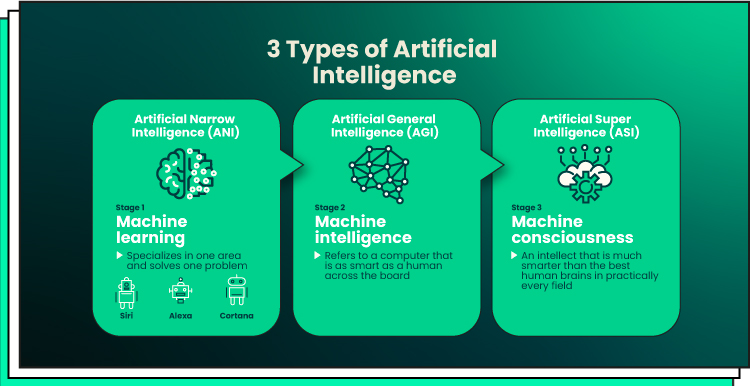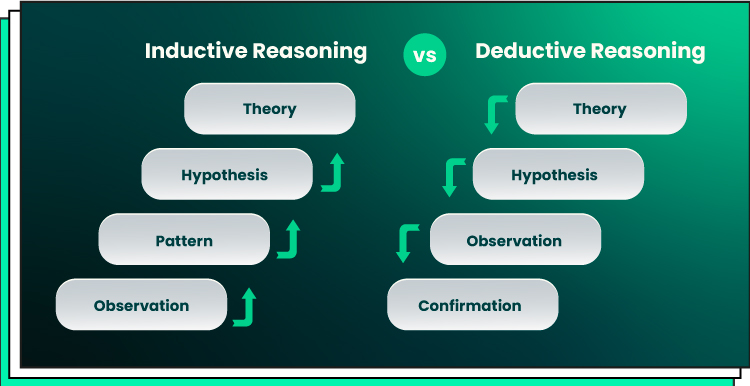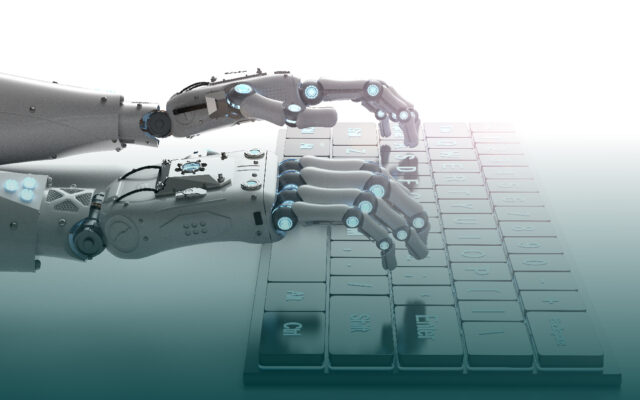Artificial intelligence has already transformed the tech industry, putting down roots in other verticals. As a result, businesses can’t resist the temptation to make their apps more advanced and sophisticated. But the AI world is intricate enough with numerous language models with unique roles and functionalities.
Whether you’re a startup or an experienced player, choosing the right AI model for your app can significantly impact your business efficacy and success.
With so many AI models available, it can be overwhelming to determine which one best suits your needs. Plus, opting for an AI model is risky if you fail to understand how it may affect your app.
Fortunately, you’ve come to the right place. In this article, we’ll introduce key AI models to help you determine the one that best fits your needs. AI implementation will empower you to make smarter decisions and propel your app to new heights.
What Is an AI Model?
AI models are programs that apply one or more algorithms to data to recognize patterns, predict, and make decisions without human involvement. The value of an AI model is that it can receive data, draw conclusions, and conduct actions based on those conclusions.
An AI model works like a human brain, doing similar things. It can plan, learn, solve problems, and make decisions.
AI models operate based on algorithms such as machine learning, deep learning models, and rule-based learning. The machine learning algorithm activates a specific data processing mechanism that enables artificial intelligence to process data and learn from them. With the help of machine learning, AI models learn without being programmed to do so.
AI models have penetrated many fields, from Google search to self-driving cars and autonomous weapons. They can significantly reduce the time needed for performing tedious tasks and provide access to insightful data that humans can use when making informed and data-driven decisions. Let’s discuss three main types of artificial intelligence and their applications.
3 Perspectives on Artificial Intelligence
There are three main types of AI models:
- Artificial narrow intelligence (ANI), which is characterized by a narrow list of abilities
- Artificial general intelligence (AGI), which resembles human intelligence and covers most human capabilities
- Artificial superintelligence (ASI), is expected to perform more complex tasks than humans

Artificial Narrow Intelligence (ANI)
Artificial narrow intelligence (ANI) is also known as weak AI or narrow AI. It is one of the most developed AI branches that performs singular tasks and has a narrow focus. For example, a narrow AI model can be involved in the facial recognition process, image recognition, voice recognition, search engine processes, and more. Artificial narrow intelligence is very smart at performing particular tasks that AI is programmed to perform.
Narrow artificial intelligence grows along with machine learning and deep learning models. This AI model type is implemented in many industries. For example, artificial narrow intelligence is used in medicine for disease detection and disease mapping. The technology is also used in e-mail filtering, self-driving, manufacturing, and other fields.
The most popular applications of narrow AI are the following:
- Voice assistants. Siri, Google Assistant, and Alexa are voice assistants based on Narrow AI. They are designed to understand and respond to voice commands and perform tasks like answering questions, making phone calls, and setting alarms.
- Email filtering. Narrow AI is used in email services like Gmail to filter out spam emails and sort out incoming emails into different folders.
- Recommendation engines for AI product recommendations. They recommend products to customers based on their purchase history and behavior on the e-commerce website. Netflix, Amazon, and Spotify use narrow AI to analyze user preferences and recommend movies and songs.
Artificial General Intelligence (AGI)
Artificial general intelligence (AGI) is also known as strong AI or deep AI. As said before, AGI can mimic human intelligence, learn from historical data, and use these insights for problem-solving. If you are not an AI developer or data scientist, it will be hard for you to differentiate the output generated by artificial general intelligence from the human-made output.
The goal of AI professionals today is to expand the capabilities and cognitive abilities of strong AI by making it conscious. They aim to make machines capable of performing more complex tasks and taking learning initiatives. The knowledge produced as a result of AI work can be used for solving a wide range of tasks, not just the tasks the machine is programmed to solve.
Today, AGI is applied in self-driving cars and supercomputers like IBM’s Watson. It is also used for creating music and strategizing war and crisis scenarios. Artificial general intelligence is not so widespread, but the speed of innovation with AGI is accelerating.
Artificial Superintelligence (ASI)
Under the ASI concept, AI is supposed to fully understand human emotions, mimic human creativity, and understand the implications even if they are not expressed directly. Besides, ASI is expected to outperform humans in all spheres, including science, sports, art, medicine, etc. Among other characteristics that will differentiate artificial superintelligence will be supreme performance and fast training data processing.
The hypothetical growth of artificial superintelligence has many constraints and limitations. First and foremost, it’s the ethical dilemma of growing the technology able to compete with humans. In this regard, we can talk about the unpredicted consequences for humanity that may even impact our survival. Fortunately, things like artificial superintelligence are now more of a movie idea than a close reality.
3-Step AI Modeling Process
Before we move to the AI modeling process, let’s quickly go through the data pipeline. To enable any AI model, we need data. AI experts start with data collection and preparing it for AI processing. The next stage of the data pipeline is implementing smart ML techniques that will enable artificial intelligence and advanced analytics. If you are interested in learning more about major machine-learning techniques, check out our recent blog post.
Now, the data is ready, and we can start the AI modeling process. It involves three steps:
- AI modeling. The first task is to develop an AI model based on the chosen machine learning algorithm. Artificial intelligence modeling can also combine several algorithms that will compose a layer.
- Model training. The next task is to train our AI model. For this, we will need the data that goes through the data pipeline and is ready for processing. Artificial intelligence will process big volumes of data in iterative test loops. The testing results will determine the success of model training. If you get the results as expected after thorough testing, you can integrate the model. If the results are not accurate, your AI development team will improve the AI model as it learns.
- Inference. This is the final step in the AI modeling process. Inference means implementing your AI models in real life to improve decision-making and get access to insightful data.
Why are we talking about AI? Forbytes is a pro software development partner for businesses across the globe. If you need help with AI integration – leave us a note and get a prompt response from our AI experts.
AI Models Explained
There are numerous AI models available for data scientists and software engineering experts. We will discuss the main ones.
ANN, or Artificial Neural Network
ANN is also known as neural sets or neural networks. Neural networks are inspired by the way brain neurons work — ANN mimics the work of the human brain. Neurons composing ANN are grouped into nodes. Their connection resembles synapses in the biological brain and can transfer the signal from one neural to another to further process it.
Following are some important ANN applications:
- Speech recognition: It relies heavily on ANNs, allowing for acquiring a precise classification.
- Signature classification: ANN is used to recognize signatures and determine whether they are genuine.
- Handwritten character recognition: ANNs are employed to recognize handwritten characters like letters or digits.
- Medical: AANs are used to detect cancer cells and analyze MRI pictures by providing detailed results.
CNN, or Convolutional Neural Network
CNN is typically used for processing pixel data. Instead of general matrix multiplication, CNN uses another mathematical technique at least at one of the layers — convolution. This AI model can differentiate various aspects and objects in the input image by importance.
The AI model is used for image recognition, face recognition, recommender systems, natural language processing, and more.
RNN, or Recurrent Neural Network
In Recurrent Neural Networks, nodes composed of neurons connect into cycles. As a result, the output from one node can affect the input of subsequent nodes. This enables the AI model to work dynamically by using its internal memory for input processing. RNN models are applied to speech recognition and handwriting recognition.
With RNN models, you may tackle many problems, including:
- Music generation
- Speech recognition
- Automated translation
- Video analysis
- Biological sequences analysis
GAN, or Generative Adversarial Network
A Generative Adversarial Network is one of the AI models that can recognize patterns in the input data. The model uses the results to produce the output by analogy with the input patterns. By doing so, the artificial intelligence model produces the output that could plausibly be produced based on the same input.
Here are some of the common uses of GANs:
- Image synthesis and generation: GANs may create lifelike pictures, including fresh artwork, avatars, and photographs.
- Image-to-image translation: GANs may be used to change pictures, including changes in styles and transformation into realistic images.
- Text-to-image synthesis: GANs can be applied to create visuals from text-based instructions.
- Data augmentation: GANs can augment present data and create synthetic data samples.
- Data generation for training: GANs can generate high-resolution images from low-resolution inputs.
SVM, or Support Vector Machines
This AI model is used for logistic regression analysis and classification. Under this algorithm, AI constructs the set of hyperplanes to classify data points in the high-dimensional space. The model aims at determining the hyperplane that maximizes the gap between different data classes. By operating data in a high-dimensional space, AI can classify it. SVM is used for solving complex classification tasks, including problems in bioinformatics, image recognition, as well as text classification.
Other Important Classifications
AI models differ in terms of other characteristics and can be categorized into many groups. Let’s discuss the different types of AI based on functionality and knowledge classification.
Functionality-Based Classification
Based on the functionality, AI models can be grouped into 4 categories:
Reactive AI
Reactive artificial intelligence is one of the AI types that cannot store data and perform historical data analysis. It just responds to the current stimuli in the way the human brain does. Reactive AI models use only present data and are unable to leverage the previous data for making future decisions. Their capabilities are limited to particular tasks.
An example of a reactive AI is IBM Deep Blue which is the most famous AI system. This is a supercomputer that defeated international grandmaster Garry Kasparov. The value of this reactive AI system is that it understands the rules of chess, recognizes all the pieces, and knows how to move them.
Limited Memory AI
This AI type is capable of storing data and learning from it to make informed decisions. By learning from experience, the AI model evaluates potential decisions and uses these insights to guide future actions.
An example of a limited-memory AI model is self-driving cars. These cars can observe the conditions on the road, analyze them, and make decisions about the speed, route, and behaviors of other vehicles.
Theory of Mind AI
Strong AI is based on the theory of mind framework. The AI that is based on the theory of mind is speculated to have the ability to identify and differentiate the intentions, beliefs, needs, and states of intelligent entities. Strong AI is not aimed at performing narrow tasks. Instead, it is taught to understand the context and the intention humans imply in their message.
An example of Mind AI is “Theory of Mind Net” by Neil Rabinowitz. This system observes other AI systems and learns their characteristics and functions.
Self-aware AI
This is not one more type of existing AI technology. It’s just a hypothetical type of artificial neural network that is self-aware and can outperform the human brain many times. Artificial superintelligence is rather a science fiction notion than a promising AI development area.
Knowledge-Based Classification
AI models can also be classified based on the learning type. Here are 2 categories we may talk about:

Inductive AI
By using inductive branches of AI, experts can use multiple datasets consisting of input and output variables to teach the machine. Using the datasets and the limited input, the machine tries to form an inductive hypothesis. That is, technology creates a hypothesis about the general based on what it knows about the specific.
The inductive AI model can be applied for:
- Spam filtering: Inductive learning algorithms analyze large volumes of labeled data to identify patterns and features of spam.
- Image classification: It is used in image classification tasks to recognize specific object classes.
- Natural language processing: It is applied for tasks like sentiment analysis or text classification.
Deductive AI
The AI model will move from general to specific reasoning in this case. Deductive reasoning is making a conclusion based on the assumption applied to the input. In other words, AI models that work on this reasoning type are aimed to make inferences based on what is already considered true.
These are a few examples of practical applications of deductive reasoning in AI:
- Expert systems: The deductive AI model is the backbone of expert systems which analyze user inputs, apply rules, and provide expert recommendations or solutions.
- Automated reasoning: Deductive AI is the basis of automated reasoning, allowing deriving new facts and validating existing ones.
- Medical diagnosis: Deductive AI is used to evaluate the symptoms, generate a diagnosis, and recommend further treatments.
Seeking to Integrate an AI model?
As you see, there are numerous AI models that you can benefit from. Depending on the sphere, goals, and business constraints, companies choose a particular AI development strategy and start cutting the operation costs or increasing performance.
To choose the best AI model for your business, get in touch with our developers. Forbytes can help you audit your business, study your challenges, and decide on the aspects of your business where AI can have a positive impact. Contact us for an AI-powered solution that will make your business smarter, data-driven, and more efficient.

Our Engineers
Can Help
Are you ready to discover all benefits of running a business in the digital era?

Our Engineers
Can Help
Are you ready to discover all benefits of running a business in the digital era?









